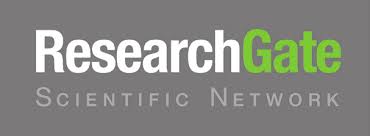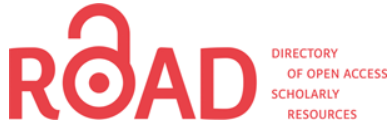- Editorial Board
- Aims and Scope
- Peer Review Process
- Publication Ethics
- Open Access Policy
- Plagiarism Policy
- Indexing
- License Term
- Manuscript Template
- Archiving Policy
- Complaints Policy
- Copyright and Licensing Policy
- Correction, Retraction, Withdrawal Policies
- Creative Commons License
- Publication Ethics and Malpractice Statement
- Article Processing Charge
- Authors Guidelines
- Reviewer Guidelines
Author Guidelines
Submission
One of the manuscript's authors should submit manuscripts using the online editorial system.
To submit according to the requirements and publishing rules, you can simply register as a new user or log in directly if you have already registered. You can also use a template for publishing in the journal, and you can submit the article using the email: [email protected].
The system only accepts standard Word format files (.doc, .docx, .rtf), regardless of the source of the word processing tool. We only accept online submissions to speed up publication and reduce administrative costs. We will not accept submissions from anyone other than one of the authors. The submitting author is responsible for the paper during submission and peer review. If there is a technical issue preventing submission through the system, the author can contact the editorial office for support.
Submission requirements
The papers you submit must not have been published elsewhere or be under consideration by another journal. The submitting author must ensure that all other co-authors have agreed to publish the article. Only the acknowledgment from the editorial board officially determines the date of receipt. Unless otherwise stated, the editorial board will send further correspondence and proof to the author(s) before publication.
In a single issue, the journal may include only one publication by the same author or author team. We will immediately reject multiple publications submitted simultaneously. The author(s) must submit their next publication no later than the completion of the previous publication, ensuring that it does not appear in two subsequent issues.
The journal publishes original research or review papers. We do not accept research based on questionnaires or survey analysis for publication. We also do not consider studies based on published results of global or national annual reports.
(Turnitin) service
After you submit your paper, we will conduct a similarity test to detect plagiarism. The overall similarity (similarity index) should not exceed 20%.
Article Content
Please prepare the paper in the following order:
- Title
- It should include the full name of the author, not just initials.
- Provide your full postal address for the institution, including department, university, city, state, email, and ORCID ID.
- Abstract
- Keywords
- Main text
- Acknowledgements
- References
The length of the article and the publication, including tables and figures, should be between 6 and 15 standard A4 pages. Publishing a longer publication requires the approval of the editors, who must pay an additional fee. The title should be informative but concise.
Peer Review
We subject all manuscripts to peer review and expect them to meet our standards of academic excellence. Submissions will be considered by the editor and, if not rejected outright, by peer reviewers, whose identities will remain anonymous to the authors.
Abstract
The manuscript must include an abstract. The abstract must be independent and free of citations. The site publishes the abstract as a separate work, containing all the basic information about the paper, including the objectives, materials, methodology, main results, and conclusions.
Acknowledgments
Acknowledge grants and presentations at the end of the paper before the references.
References
Authors should ensure that there is comprehensive and accurate reference information. The reference list should contain the most recent (last 10 years) entries. Arrange all references alphabetically and number them consecutively. Avoid multiple citations; a maximum of 2-3 citations from the same author are acceptable.
IJSER references follow the IEEE style. The IEEE style is a numbered referencing style that uses citation numbers in the text of the paper, presented in square brackets. At the end of the paper, a corresponding full reference appears next to the relevant citation number. The IEEE style is based on the IEEE Editorial Style Manual, version 9, published in 2016.
[1] Young, “Synthetic structure of industrial plastics (book style with paper title and editor),” in Plastics, 2nd ed., vol. 3, J. Peters, Ed., New York: McGraw-Hill, 1964, pp. 15–64.
[2] K. Chen, Linear Networks and Systems (book style). Belmont, CA: Wadsworth, 1993, pp. 123–135.
[3] Poor: An Introduction to Signal Detection and Estimation is the title of the book. New York: Springer-Verlag, 1985, ch. 4.
[4] Smith's work, "An approach to graphs of linear forms (unpublished work style)," remains unpublished.
[5] H. Miller, "A note on reflector arrays (periodical style—accepted for publication)," IEEE Trans. Antennas Propagate., forthcoming.
[6] Wang, “Fundamentals of erbium-doped fiber amplifier arrays (periodical style—Submitted for publication),” IEEE J. Quantum Electron., submitted for publication.
Figures are prepared.
Provide each figure as a separate electronic file in bitmap formats (TIFF, GIF, JPEG, etc.). Bitmap images should have a 300-dpi resolution. We prefer colored images instead of black and white.
Number each figure according to its appearance in the manuscript (e.g., Figure 1, Figure 2). Label each part of a multi-part figure separately, such as Figure 1a and Figure 1b. The full text of the manuscript must include the figure captions.
Preparation of Tables
In the text, you should cite tables consecutively. Each table should have a descriptive title, and if it contains numerical measurements, the column heading should include the units.
Equations
Number the equations on the right-hand side sequentially in parentheses. When 'equation' appears with a number, such as in Eq. (1), capitalize and abbreviate it.
Proofs
You must return corrected proofs to the publisher within 2–3 days of receipt. The publisher will do everything possible to ensure prompt publication. Therefore, the publisher will appreciate it if the manuscripts and figures follow the journal's style from the start.
Copyright
The terms of http://creativecommons.org/licenses/by-SA/4.0/ govern the distribution of all open-access articles, and open-access authors maintain ownership of their copyrights.
Disclosure Policy
When a secondary interest, such as financial gain, influences professional judgment about the validity of research, this is known as a competing interest. We require that our authors reveal all possible conflicts of interest in their submitted manuscripts.









